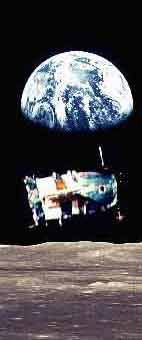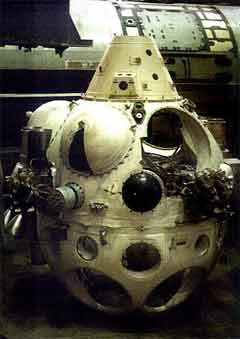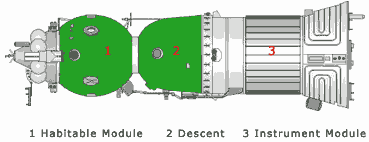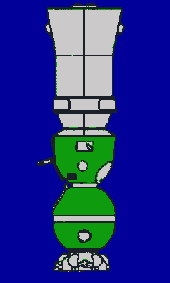

      |
Soviet Moon Race
|
 |
 |
In the N1-L3 lunar scenario, the Lunar Orbitor (LOK), the LK lunar lander, and the Block D deceleration stage would be inserted into lunar orbit by a burn of the Block D. One crewman would spacewalk from the LOK to the LK. After separation from the LOK, the LK itself would accomplish the final lunar descent. After surface exploration, the single cosmonaut would return to the LK, which would propel itself back into lunar orbit for docking with the waiting LOK and transfer of the crewman and surface samples. The single cosmonaut aboard the LOK would perform the rendezvous and docking with the LK, and the LOK would make the engine burn to take the crew back to earth.

The Lunar Orbiter was designed with a descent module (for return to earth), and a habitable module. The habitable module was a dedicated compartment accommodating the attitude control and berthing engines and a docking system mechanism. The propulsion and power compartments where contained in the rear rocket stage I.
The habitable compartment also served the function as an airlock for cosmonauts to move to the lunar lander through open space (in the space suit Krechet ).
Only misidentified remnants of LOK's are exhibited today, at the MAI Museum in Moscow and the Energia Museum in Korolev.

Mouse over to view Soviet and USA Lunar Obiter Vehicles.
Specifications Lunar Orbiter
Manufacturer's Designation : 7K-LOK.
Crew Size : 2.
Design Life : 13 days.
Total Length : 10.1 m.
Maximum Diameter : 2.9 m.
Total Habitable Volume : 9.00 m3.
Total Mass : 9,850 kg.
Total Propellants : 3,152 kg.
Primary Engine Thrust : 3,388 kgf.
Main Engine Propellants : Nitrogen tetroxide/UDMH.
Main Engine Isp : 314 sec.
Total spacecraft delta v : 1,100 m/s
Electrical System : Fuel cells.